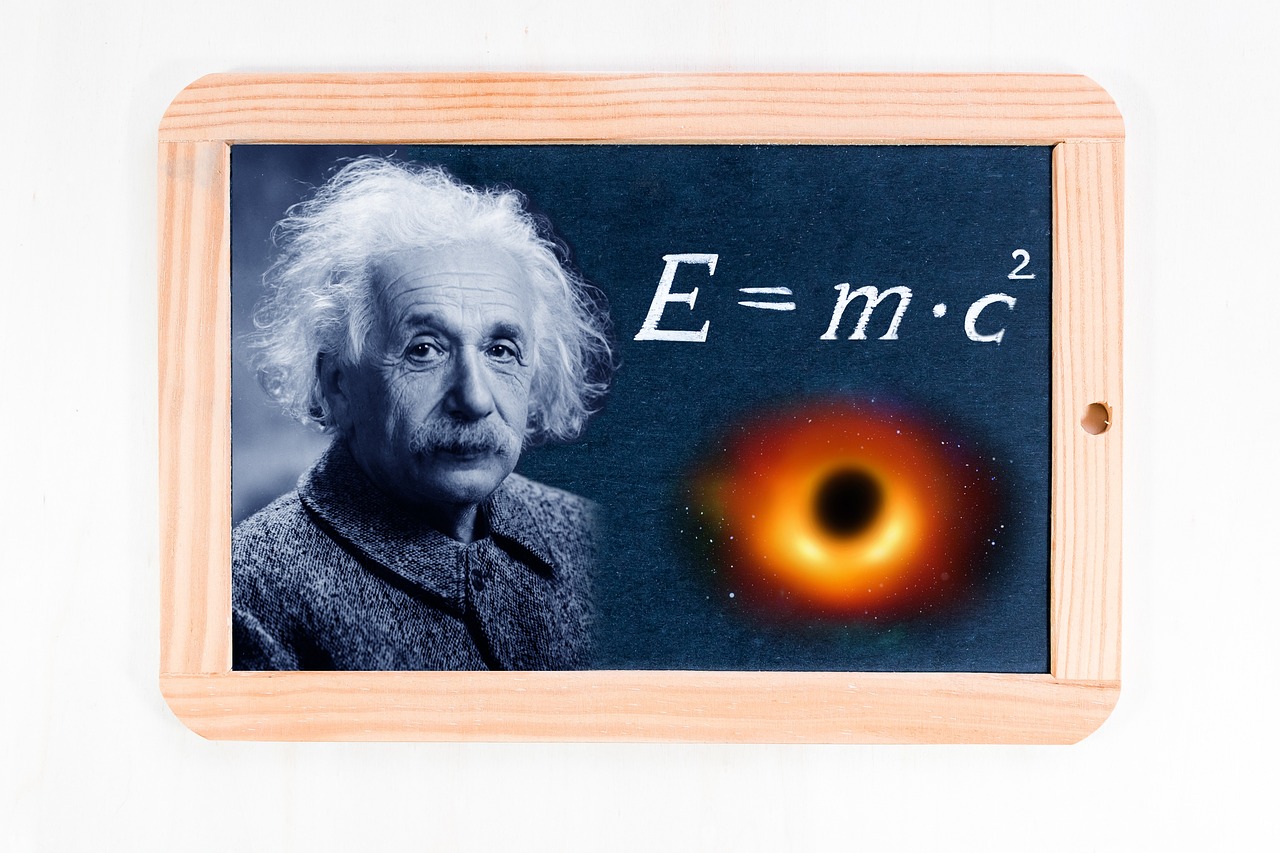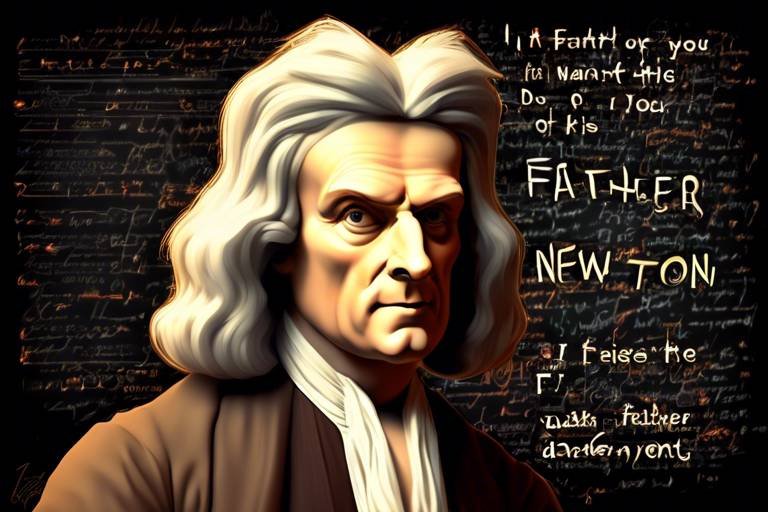Laplace: The Mathematician of Celestial Mechanics
Pierre-Simon Laplace, known as the "Mathematician of Celestial Mechanics," was a visionary figure whose work transformed our understanding of the universe. His contributions to astronomy, mathematics, and physics have left an indelible mark on the scientific community, paving the way for groundbreaking discoveries in celestial mechanics.
Born in Normandy, France, in 1749, Laplace displayed a remarkable aptitude for mathematics from a young age. His early education and upbringing instilled in him a passion for scientific inquiry, setting the stage for his future achievements in the field of celestial mechanics.
One of Laplace's most significant contributions was his development of key principles and theories in celestial mechanics. By exploring gravitational forces, planetary motion, and the stability of the solar system, he revolutionized the way we perceive the dynamics of celestial bodies.
Central to Laplace's work were his groundbreaking equations that described the behavior of celestial bodies within the solar system. These differential equations provided a mathematical framework for understanding planetary motion and orbital dynamics, laying the foundation for modern celestial mechanics.
Perhaps most famously, Laplace proposed the Nebular Hypothesis, suggesting that the solar system formed from a primordial nebula. This revolutionary idea challenged prevailing beliefs about the origins of the universe and set the stage for advancements in cosmology and planetary science.
The impact of Laplace's work on astronomy cannot be overstated. His insights into the structure of the universe, the motion of celestial bodies, and the evolution of planetary systems have shaped our understanding of the cosmos and influenced generations of scientists.
Today, Laplace's legacy endures in the continued relevance of his contributions to celestial mechanics. His mathematical innovations and analytical techniques remain fundamental to modern astronomy and space exploration, underscoring the enduring significance of his work in advancing our knowledge of the universe.
As we look to the future, Laplace's theories and principles continue to inspire new generations of mathematicians, astronomers, and physicists, driving innovation and discovery in the field of celestial mechanics. His enduring legacy serves as a testament to the power of human intellect and curiosity in unraveling the mysteries of the cosmos.

Early Life and Education
Pierre-Simon Laplace, the brilliant mind behind numerous contributions to celestial mechanics, had a fascinating early life and educational journey that laid the groundwork for his future achievements. Born in Beaumont-en-Auge, Normandy, on March 23, 1749, Laplace displayed an early aptitude for mathematics and science. Despite facing financial constraints, he pursued his education with determination and passion, eventually attending the University of Caen to study theology. However, his true calling in mathematics soon became evident, leading him to Paris and the world of academia.
In Paris, Laplace immersed himself in the intellectual circles of the time, engaging with prominent mathematicians and scientists who would influence his thinking. His encounters with the likes of Euler and Lagrange sparked a deep interest in celestial mechanics, prompting him to delve into the mysteries of the universe. Laplace's insatiable curiosity and analytical mind set him apart, propelling him towards groundbreaking discoveries that would shape the course of scientific history.

Principles of Celestial Mechanics
Celestial mechanics, a branch of astronomy and physics, encompasses the study of the motion and interaction of celestial bodies in space. At the core of this fascinating field are the principles established by Pierre-Simon Laplace, a visionary mathematician whose work continues to inspire and shape our understanding of the cosmos.
Laplace's exploration of celestial mechanics was marked by his profound insights into the gravitational forces that govern the movement of planets and stars. By formulating mathematical equations that described these forces, he provided a framework for predicting and explaining the intricate dance of celestial bodies in the vast expanse of space.
One of Laplace's most significant contributions to celestial mechanics was his theory on planetary motion, which laid the groundwork for understanding the stability and dynamics of the solar system. Through his meticulous calculations and rigorous analysis, he revealed the underlying principles that govern the orbits of planets around the sun.
Central to Laplace's work in celestial mechanics was his emphasis on precision and accuracy in mathematical modeling. By developing sophisticated equations that captured the complexities of planetary motion, he elevated the study of celestial mechanics to new heights, setting a standard for future generations of astronomers and mathematicians.
Moreover, Laplace's investigations into the stability of the solar system shed light on the delicate balance of gravitational forces that keep celestial bodies in their orbits. His meticulous attention to detail and rigorous methodology paved the way for a deeper understanding of the mechanisms that govern the movement of planets and stars.

Laplace's Equations
Laplace's Equations, formulated by the brilliant mind of Pierre-Simon Laplace, represent a cornerstone in the study of celestial mechanics. These differential equations, crafted with precision and insight, serve as the mathematical framework for understanding the intricate dance of celestial bodies within our solar system. With a stroke of genius, Laplace's equations elegantly describe the behavior of planets, moons, and other celestial entities as they move through the vast expanse of space.
At the heart of Laplace's equations lies a deep understanding of gravitational forces and their influence on the motion of celestial bodies. By quantifying the gravitational interactions between planets and the Sun, Laplace provided a mathematical language to decipher the complex dynamics of planetary orbits. Through these equations, he unlocked the secrets of planetary motion, revealing the underlying harmony that governs the celestial realm.
Furthermore, Laplace's equations shed light on the stability of the solar system, offering insights into the long-term behavior of planetary orbits. By modeling the interactions between celestial bodies with mathematical precision, Laplace paved the way for predicting the future positions of planets and understanding the resilience of our cosmic neighborhood. His equations not only explain the past and present configurations of the solar system but also provide a glimpse into its enduring stability over time.
In essence, Laplace's equations stand as a testament to the power of mathematics in unraveling the mysteries of the universe. Through his pioneering work in celestial mechanics, Laplace not only transformed our understanding of planetary motion but also laid the groundwork for future generations of scientists to explore the depths of space with mathematical rigor and intellectual curiosity.

Nebular Hypothesis
The proposed by Pierre-Simon Laplace revolutionized our understanding of the formation of the solar system. According to this groundbreaking theory, the solar system originated from a massive rotating cloud of gas and dust known as a nebula. Over time, the nebula gradually cooled and contracted, leading to the formation of the sun at its center and the planets orbiting around it.
Laplace's Nebular Hypothesis challenged the prevailing belief at the time, which suggested that the sun and planets were created separately. By proposing a unified and naturalistic explanation for the origin of the solar system, Laplace laid the foundation for modern cosmology and planetary science. His hypothesis not only provided a plausible explanation for the formation of celestial bodies but also offered insights into the evolution of planetary systems.
One of the key aspects of the Nebular Hypothesis is the concept of accretion, where small particles within the nebula gradually came together to form larger bodies such as planets. This process of gravitational attraction and accumulation played a crucial role in shaping the structure and composition of the solar system as we know it today.
Furthermore, Laplace's Nebular Hypothesis highlighted the importance of natural laws and physical processes in shaping the universe. By emphasizing the role of scientific principles in understanding the formation of celestial bodies, Laplace's theory paved the way for a more systematic and evidence-based approach to studying the cosmos.
In summary, the Nebular Hypothesis proposed by Pierre-Simon Laplace represents a significant milestone in the history of astronomy and cosmology. By presenting a coherent and scientifically sound explanation for the origin of the solar system, Laplace's theory continues to inspire researchers and scientists to explore the mysteries of the universe.

Impact on Astronomy
When examining the impact of Pierre-Simon Laplace on astronomy, one cannot overlook the profound influence his work has had on our understanding of the cosmos. Laplace's groundbreaking contributions revolutionized the field of astronomy, reshaping the way we perceive the structure and dynamics of the universe.
One of the key areas where Laplace made a significant impact was in elucidating the motion of celestial bodies. By developing theories and principles that explained the gravitational forces governing planetary orbits, Laplace provided astronomers with a comprehensive framework for understanding the intricate dance of the planets around the sun.
Furthermore, Laplace's work on the evolution of planetary systems shed light on the formation and development of celestial bodies, offering valuable insights into the origins of our solar system and beyond. His meticulous calculations and rigorous mathematical analyses paved the way for a deeper comprehension of cosmic phenomena.
Moreover, Laplace's contributions to astronomy extended to the study of the universe's structure, providing astronomers with essential tools to unravel the mysteries of galaxies, stars, and other celestial objects. His work not only advanced our knowledge of the cosmos but also inspired future generations of astronomers to explore the depths of space with renewed vigor and curiosity.
In conclusion, the impact of Laplace on astronomy cannot be overstated. His pioneering research and innovative ideas have left an indelible mark on the field, shaping the way we perceive the universe and inspiring generations of scientists to continue pushing the boundaries of knowledge.

Legacy and Influence
Exploring the legacy of Pierre-Simon Laplace unveils a profound influence that resonates through the corridors of celestial mechanics. Laplace's indelible mark on the field continues to inspire generations of mathematicians, astronomers, and physicists, shaping our understanding of the cosmos. His groundbreaking work transcends time, leaving a lasting imprint on the fabric of scientific inquiry.
Delving into Laplace's legacy reveals a tapestry woven with mathematical innovations that revolutionized celestial mechanics. His analytical methods and computational tools paved the way for future advancements in the field, setting a standard of excellence that endures to this day. Laplace's legacy serves as a guiding light for aspiring scientists, beckoning them to reach for the stars in pursuit of knowledge.
Reflecting on Laplace's influence evokes a sense of awe at the magnitude of his contributions to astronomy and physics. His theories and principles remain foundational pillars upon which modern understanding of the universe is built. Like a celestial navigator charting uncharted territories, Laplace's legacy guides us through the vast expanse of cosmic mysteries, illuminating the path to discovery.
Unpacking the legacy and influence of Laplace is akin to deciphering a celestial code that unlocks the secrets of the universe. His work transcends mere equations and theorems, embodying a spirit of inquiry that propels humanity towards a deeper comprehension of the cosmos. Laplace's influence endures as a testament to the power of human intellect and the boundless possibilities of scientific exploration.

Mathematical Innovations
When it comes to mathematical innovations in the realm of celestial mechanics, Pierre-Simon Laplace was truly a trailblazer. His pioneering work introduced a host of analytical techniques and computational tools that revolutionized the field and set the stage for future advancements. Laplace's keen mathematical insights allowed him to develop sophisticated models and equations that provided a deeper understanding of the complex interactions governing celestial bodies.
One of Laplace's most significant contributions was the development of powerful mathematical methods for analyzing planetary motion and orbital dynamics. Through his equations, he was able to describe the behavior of celestial bodies within the solar system with unprecedented accuracy and precision. These mathematical innovations not only enhanced our understanding of planetary motion but also paved the way for the development of modern astronomical theories.
Laplace's mathematical prowess extended beyond mere calculations; he also introduced innovative concepts that transformed the way we perceive the universe. By applying advanced mathematical principles to celestial mechanics, Laplace was able to unravel the mysteries of planetary systems and cosmic phenomena. His analytical tools provided a framework for exploring the intricate relationships between celestial bodies and understanding the underlying forces shaping their movements.
Furthermore, Laplace's mathematical innovations were instrumental in predicting celestial events and phenomena with remarkable accuracy. His rigorous mathematical models allowed astronomers to forecast eclipses, planetary transits, and other astronomical occurrences well in advance, demonstrating the practical utility of his mathematical techniques in celestial observations and predictions.
In essence, Laplace's mathematical innovations in celestial mechanics not only revolutionized the field of astronomy but also laid the foundation for modern astrophysical research. His analytical methods and computational tools continue to inspire generations of scientists and mathematicians, underscoring the enduring legacy of his groundbreaking contributions to our understanding of the cosmos.

Continued Relevance
Pierre-Simon Laplace's contributions to celestial mechanics continue to hold significant relevance in modern astronomy and space exploration. His pioneering work in formulating mathematical equations to describe the behavior of celestial bodies within the solar system laid the groundwork for our understanding of planetary motion and orbital dynamics. The principles and theories established by Laplace remain fundamental in guiding current research and exploration missions beyond our planet.
One key aspect of Laplace's legacy is his emphasis on the stability of the solar system. By studying gravitational forces and planetary motion, Laplace provided insights that are still utilized in spacecraft trajectory calculations and mission planning. His equations and mathematical techniques are integral to the success of space missions, ensuring precision in navigating through the vast expanse of space.
Furthermore, Laplace's Nebular Hypothesis, proposing the formation of the solar system from a spinning disk of gas and dust, continues to influence our understanding of planetary formation and evolution. This concept has shaped modern cosmological models and guided astronomers in studying the birth of planets and stars in distant galaxies.
In the realm of theoretical astrophysics, Laplace's analytical methods and computational tools have paved the way for advanced simulations of celestial phenomena. Scientists today rely on similar mathematical frameworks to model complex systems such as black holes, galaxies, and dark matter, highlighting the enduring impact of Laplace's innovative approaches.
As we gaze towards the stars and push the boundaries of space exploration, we can appreciate the enduring legacy of Pierre-Simon Laplace in celestial mechanics. His visionary insights and mathematical prowess continue to inspire generations of scientists to unravel the mysteries of the universe and chart new frontiers in our quest for cosmic understanding.
Frequently Asked Questions
- What were Laplace's major contributions to celestial mechanics?
Laplace made significant contributions to celestial mechanics, including his work on gravitational forces, planetary motion, and the stability of the solar system. His equations describing the behavior of celestial bodies revolutionized the study of planetary motion and orbital dynamics.
- How did Laplace's Nebular Hypothesis impact our understanding of the solar system?
Laplace's Nebular Hypothesis proposed that the solar system formed from a primordial nebula. This idea challenged existing beliefs and laid the foundation for modern cosmology and planetary science, influencing our understanding of the origin and evolution of planetary systems.
- What is Laplace's legacy in the field of celestial mechanics?
Laplace's work continues to influence mathematicians, astronomers, and physicists today. His mathematical innovations and analytical methods revolutionized the study of celestial mechanics, shaping our understanding of the universe and remaining relevant in modern astronomy and space exploration.



















